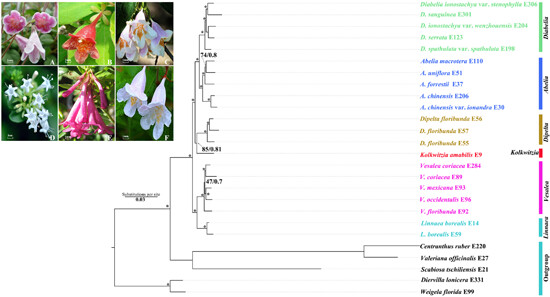

Journal of Systematics and Evolution >
Biogeographic analysis based on phylogenomic data supports multiple ancient dispersals that facilitated the eastern Asia–North America–Mexico disjunction in the subfamily Linnaeoideae (Caprifoliaceae)
Received date: 2022-07-11
Accepted date: 2023-10-20
Online published: 2023-12-18
Supported by
This study was supported by the National Natural Science Foundation of China (32270221), the Project of Sanya Yazhou Bay Science and Technology City (Grant No. SCKJ‐JYRC‐2022‐83), Hainan Province Science and Technology Special Fund (ZDYF2022XDNY190, ZDYF2022XDNY176), and funding from the Collaborative Innovation Center of Nanfan and High‐Efficiency Tropical Agriculture, Hainan University (XTCX2022NYB09), Innovation Fund for Scientific and Technological Personnel of Hainan Province and Hainan Provincial Natural Science Foundation of China (421RC486, 320RC672).

Key words: biogeography; divergence time estimation; Linnaeoideae; phylogenomics
Hong‐Xin Wang, Diego F. Morales‐Briones, Jacob B. Landis, Jun Wen, and Hua‐Feng Wang . Biogeographic analysis based on phylogenomic data supports multiple ancient dispersals that facilitated the eastern Asia–North America–Mexico disjunction in the subfamily Linnaeoideae (Caprifoliaceae)[J]. Journal of Systematics and Evolution, 2024 , 62(5) : 1025 -1036 . DOI: 10.1111/jse.13036
/
| 〈 |
|
〉 |